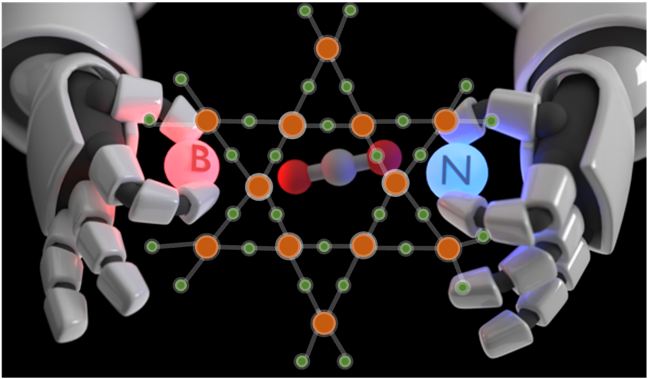Poster #P39
Navigating the Chemical Space of Catalysts
Developing and implementing tools for rapid prediction of catalytic properties can significantly expand the search space and accelerate the discovery process. To this end, we present a computational framework aimed at accelerating the exploration/optimization of catalyst landscapes by combining concepts from physical-organic chemistry, statistical techniques, and optimization algorithms. Our approach typically relies on establishing a mapping between the chemistry/geometry of the active site of catalysts and easy-to-compute descriptor variables using (non)linear scaling relationships.[1,2,3] The resulting maps then guide us to recognize "sweet spots" in the respective descriptor spaces that fulfill the criteria for maximum activity/selectivity. We leverage this information to perform straightforward “direct” screening of large libraries of catalysts to identify the ones with desired properties.[4] Furthermore, the maps also allow new catalysts to be “reverse-engineered” simply by inputting a set of desired target properties and then using an optimization algorithm to generate the best candidate. We demonstrate the efficacy of this framework for multiple case studies including the discovery of single-site and multifunctional porous catalysts for industrially relevant catalytic transformations.

Figure 1.
- R. Laplaza, S. Das, M. D. Wodrich, C. Corminboeuf, Nat. Protoc. 2022, 17, 2550.
- S. Das, R. C. Turnell-Ritson, P. J. Dyson, C. Corminboeuf, C. Angew. Chem. Int. Ed 2022, 61, e202208987.
- S. Das, R. Laplaza, J. T. Blaskovits, C. Corminboeuf, C. Angew. Chem. Int. Ed 2022, 61, e202202727.
- S. Das, R. Laplaza, J. T. Blaskovits, C. Corminboeuf, ChemRxiv 2024, 10.26434/chemrxiv-2023-09mdd–v2.
Shubhajit Das
- Faculty of Chemistry and Food Chemistry, Technische Universität Dresden, 01062 Dresden, Germany